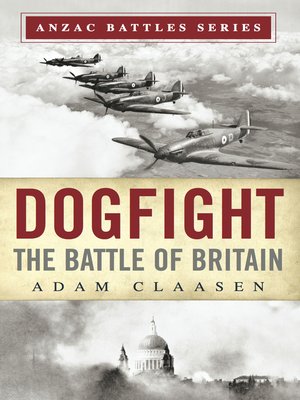
Sign up to save your library
With an OverDrive account, you can save your favorite libraries for at-a-glance information about availability. Find out more about OverDrive accounts.
Find this title in Libby, the library reading app by OverDrive.



Search for a digital library with this title
Title found at these libraries:
| Library Name | Distance |
|---|---|
| Loading... |
This book tells the story of Australians and New Zealanders in one of the Second World War's defining and most memorable campaigns. From 9 July until 31 October 1940, the German air force (the Luftwaffe) sought aerial supremacy in skies over England as a prerequisite for an invasion of Britain (Operation Sealion). The ensuing conflict of Luftwaffe and RAF aircraft in the long summer of 1940 became forever known as the Battle of Britain.
Of the 574 overseas pilots in the campaign, the New Zealand contingent of 134 airmen was second in size only to the Polish contribution. The Australian involvement, though smaller, was a healthy 37.
Thus a fifth of overseas pilots were Anzacs. Among these colonials were some of the Battle of Britain's widely admired aces. Of the top ten pilots with the greatest number of victories, two were New Zealanders (C. F. Gray and B. Carbury) and one an Australian (P. Hughes). Australian and New Zealand aircrew were also employed in attacking enemy Channel ports and airfields as part of Bomber and Coastal Command's attempts to thwart invasion preparations and blunt the Luftwaffe aerial onslaught. The Anzacs also had a fellow compatriot at the highest level in the Fighter Command system: the highly regarded New Zealander Air Marshal Sir Keith Park, who was instrumental in devising and implementing the integrated air defense of Britain around Spitfire and Hurricane aircraft, radio control and radar. In the spring of 1940, he was given the command of Group 11, which would face the brunt of the German aggression in southeast England. The success of Park's plans and operational initiatives, and the role played by Anzac pilots and aircrew, would all contribute to the conflict's eventual successful outcome.







